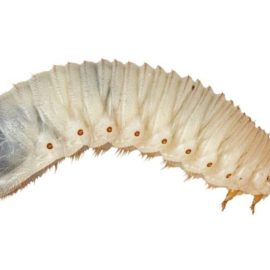Cockchafer (Melolontha melolontha) – pest management
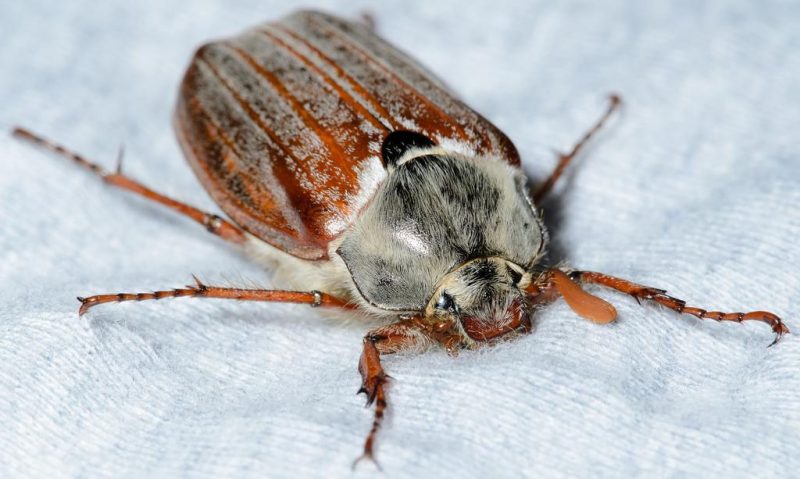
The cockchafer or maybug is a polyphagous species, which can be found all over Europe, especially in the steppe regions, near oak and beech forests.
Description. The adult is 20-25 mm long, it has a blackhead, while the pronotum and the scutellum have greenish reflections. The elytra are chestnut-colored and have four longitudinal segments, sometimes with white pubescence. The abdomen is black, with six white triangular spots on the sides. The egg is yellowish-white, oval in shape, 1.5-2 mm long. The larva is popularly called a “white worm” and has a white-yellow body, and the prothorax and legs are brown-yellow. Adults appear in late April or early May and have a twilight flight of about 30 minutes.
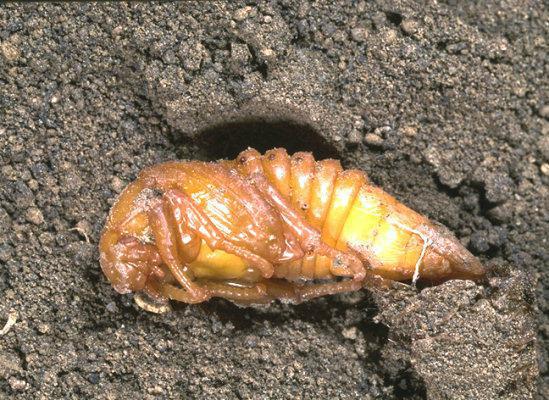
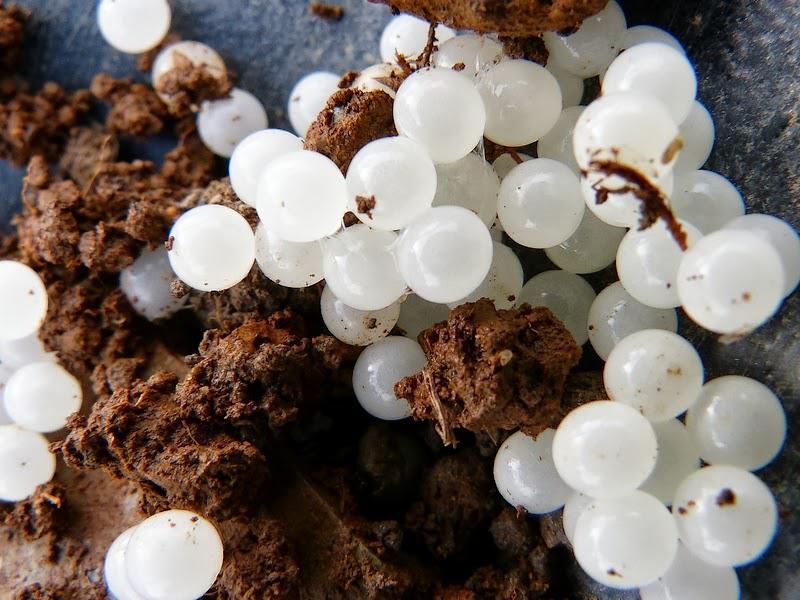
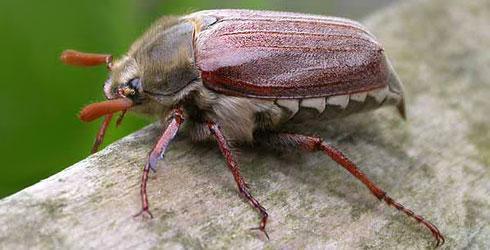
Biology. The cockchafer produces a generation once every 3-4 years and overwinters in the soil as a larva and/or adult. During the day they find shelter in the foliage of trees or shrubs, feeding on their leaves. Eggs are laid in the ground, preferably in light soils, at a depth of 10-20 cm, in groups of 20-40 pieces. The larvae hatch after 4-6 weeks, in July or early August, and feed on finer roots. In the second year, they also attack the thicker roots. Towards autumn, they descend into the soil, to a depth of 40-80 cm and overwinter.
Damage. It is a polyphagous species, with the adults attacking the leaves, sometimes the flowers and fruits in the formation of woody and grassy species. In the case of strong infestations, the leaves are completely destroyed, leaving only the main veins. Following the attack, the trees remain deciduous and lose their harvest, the wood no longer matures and suffers from frost damage during the winter. The larvae attack the roots of grassy, tubers, bulbous plants, as well as the woody roots of the seedlings in the viticulture and fruit seedbed.
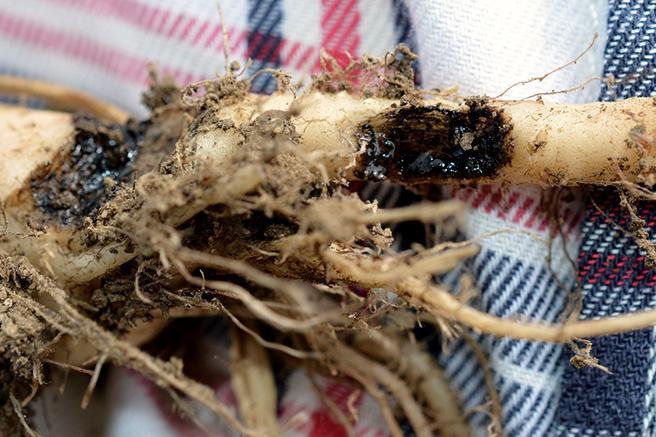
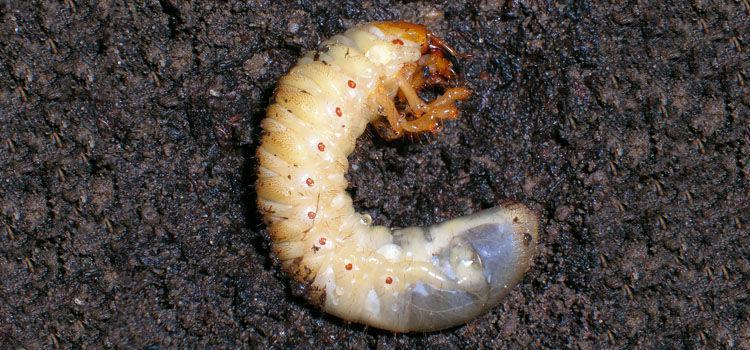
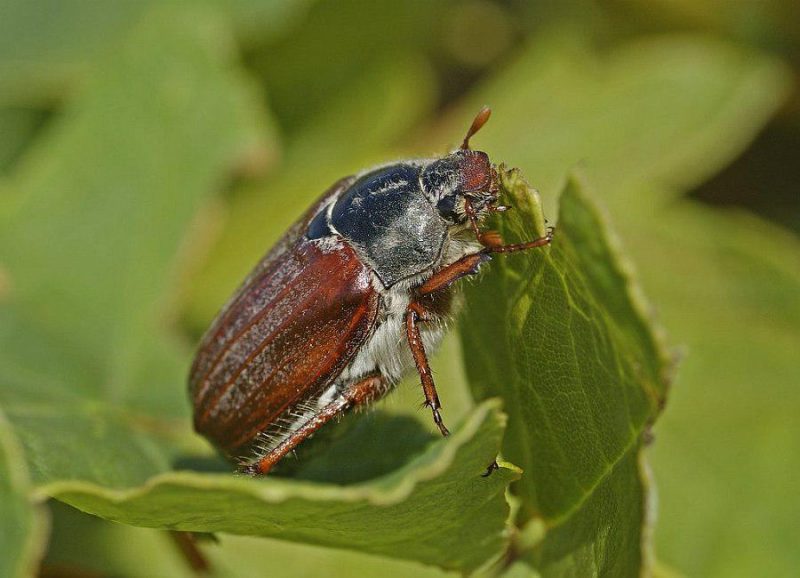
Pest management. It is recommended to perform deep plowing in autumn, repeated tillage in spring, which causes the larvae of cockchafer to surface and expose them to the weather and the action of various predators.
Also, it is recommended to apply specific insecticides when planting/sowing.
Recommended products
-
You can find products on a different store
Change Store -
You can find products on a different store
Change Store -
You can find products on a different store
Change Store -
You can find products on a different store
Change Store -
You can find products on a different store
Change Store -
You can find products on a different store
Change Store -
You can find products on a different store
Change Store -
You can find products on a different store
Change Store -
You can find products on a different store
Change Store -
You can find products on a different store
Change Store -
You can find products on a different store
Change Store -
You can find products on a different store
Change Store -
You can find products on a different store
Change Store -
You can find products on a different store
Change Store -
You can find products on a different store
Change Store -
You can find products on a different store
Change Store -
You can find products on a different store
Change Store -
You can find products on a different store
Change Store -
You can find products on a different store
Change Store -
You can find products on a different store
Change Store -
You can find products on a different store
Change Store -
You can find products on a different store
Change Store -
You can find products on a different store
Change Store -
You can find products on a different store
Change Store














































































































































































































































































































































































































































